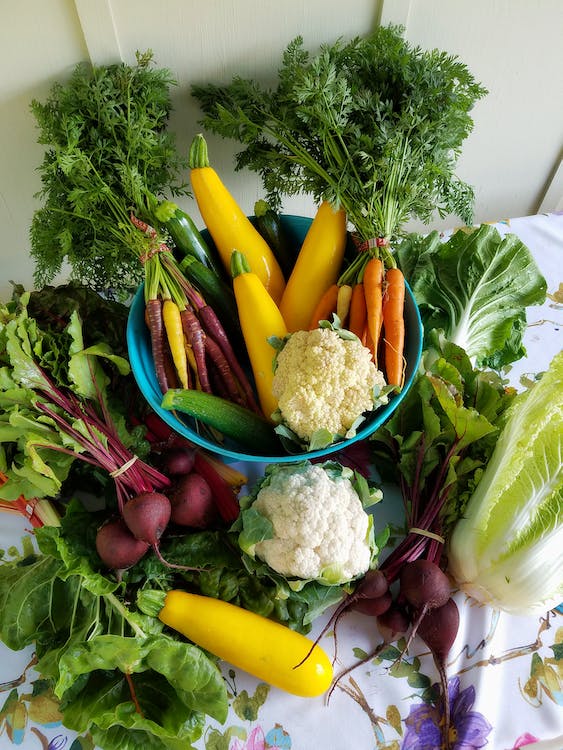Leafy greens, such as kale, spinach, arugula, and chard, are unquestionable megastars in the food ecosphere. Plants are bad for your health in more ways than you might think. They’re low in calories but high in fiber, vitamins, and phytonutrients.
Whether in the shape of incomplete foods, smoothies, or biological greens powders, greens can help you see and feel younger while also promoting good health in the elderly! If you still need convincing, keep reading to learn about all the strange advantages of including more plants in your diet.
Green vegetables are high in vitamins that can benefit your eyes, bones, teeth, heart, and lungs, as well as naphthoquinone, which helps your blood flow properly.
Green veggies can also help to cleanse the liver.
Broccoli, Bok Choy, Brussels sprouts, Kale, and Cabbage are examples of cruciferous vegetables that contain flavonoids and isothiocyanates, sulfur-containing antioxidants that protect against cancer-related cell damage.
Make a conscious effort to go green to improve your health.
Although vegetables are a vital element of a healthy diet, are all of the most effective ones green? Learn why green lactovegetarians are unique.
You may have turned your nose up at green vegetables as a kid, but one of the most basic methods to keep your mind and body healthy is to eat your greens.
While all veggies have nutritional benefits, they are not all generated similarly – demonstrating that greens are the best all-around blimey.
What kind of green veggie do you have?
Chlorophyll, a green pigment, is found in abundance in green foods. Chlorophyll aids photosynthesis, the process through which plants convert sunlight into energy. However, chlorophyll is beneficial to humans as well as shrubberies. 1
Watercress
Watercress might be a true nutritional superstar, covering a spread of essential vitamins and minerals, including vitamins K, C, and calcium. It’s also a high-end foundation of plant molecules known as phytonutrients, which have been demonstrated to be beneficial to our health. 7
Watercress has four times the beta-carotene of an apple and more than double the recommended daily amount of vitamin K (90mcg); our bodies require beta-carotene to sustain healthy vision. The ant hemorrhagic component of indifference is required for bone thickening and health.
Watercress may also help to reduce vital signs. It’s high in calcium, magnesium, and potassium, three minerals that help the body release sodium and keep arteries open, reducing force per unit area.
Kale
To get as many of the beneficial properties of kale as possible, eat it fresh, minimally cooked, or baked into a veggie chip. Kale is nutritious, fat-free, and low in calories, with critical nutrients packed to the stems. This vegetable is high in fortification, iron, calcium, vitamin C, vitamin A, and vitamin K, as well as antioxidants such as carotenoids and flavonoids, which help to fight cancer.
Health welfares
Vegetables, green veggies, abundant vegetables, and thus the particular nutrients found in abundance in green leafy vegetables, have been linked to beneficial health outcomes in numerous studies.
An increased vegetable diet has two main benefits: it lowers the risk of disease and cancer, owing to its antioxidant content. Green vegetables are high in dietary nitrate, which can reduce strength per unit area, a major risk factor for stomach distress.
The thickness of the arterial carotid artery is reduced when nitrate from vegetables is exposed to it. A thicker arterial carotid may be an indication of atherosclerosis and a higher risk of cardiopathy, whereas a wider arterial carotid may be a sign of atherosclerosis and a higher risk of cardiopathy.
The study also found that eating green, fibrous vegetables lowers the risk of metabolic disease, type 2 diabetes, and disease, including macular degeneration. Polyphenols, which are found in leafy green vegetables, are also known to benefit brain health.
Eating items like vegetables, which have fewer calories per cup than other higher-calorie foods, as part of a healthy diet, may help reduce calorie intake.
Eating a diet rich in vegetables and fruits as part of a balanced diet may lower the risk of heart disease, including coronary failure and stroke.
Eating a diet rich in vegetables and fruits as part of a well-balanced diet may protect you from a variety of malignancies.
Adding vegetables can recover fiber and potassium ingesting, which are crucial nutrients that many Americans don’t make passable of in their diet.
Fight Belly Bloat
If you’re fighting edema caused by diet, hormones, gut infections, or other digestive problems, there’s a secret ingredient in leafy greens that can help. Potassium, an inorganic mineral electrolyte found in abundance in gardens, is essential for maintaining a healthy fluid balance in your body. According to the USDA, a high-sodium diet can cause or aggravate bloating. Passable potassium intake–roughly 4,700 mg/day according to the 2015-2020 Dietary Guidelines–must be maintained to keep it under control. One cup of steamed spinach includes 840 mg of potassium, which helps you stay in shape and meet your daily requirements.

